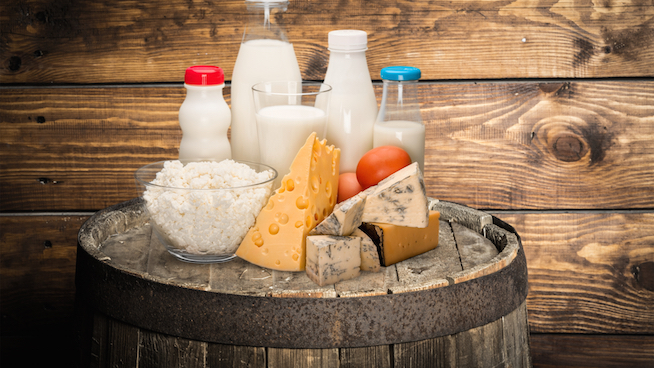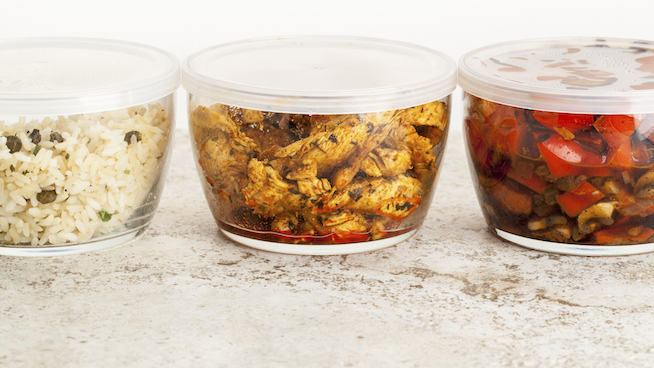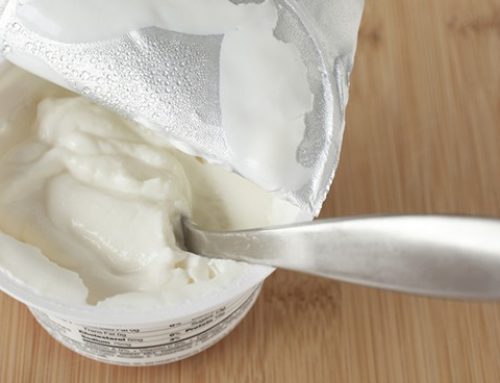Can You Eat Too Much Fiber?
High fiber daily intake can help you maintain a proper weight by keeping you full longer, warding off cravings, and maintaining blood sugars levels. Fiber also helps regulate digestion and bowel movements to prevent bloating and uncomfortable gas.
Too much fiber has the opposite effect. Overdoing it prevents absorption of other important nutrients. Plus, too much fiber is hard for your body to break down. When this happens, it often results in painful cramps, constipation, and intestinal gas or blockages.
Everyone tells us we need fiber or we need to increase our consumption of it. How do we do that safely, and how much is too much? (See Fill Up on Fiber [But Not Before Competition].)
Types of Fiber
There are two types—soluble and insoluble.
- Soluble fiber helps slow down digestion, contributes to fullness, prevents absorption of cholesterol and regulates blood sugar. Sources include oatmeal, lentils, apples, oranges, pears, nuts, beans, peas, and flaxseed.
- Insoluble fiber adds bulk to the diet and prevents constipation. Sources include whole wheat, barley, brown rice, broccoli, cabbage, raisins and dark leafy greens.
Fiber and Fat
Because the human body is unable to break down fiber, it leaves the body pretty much in the same form it entered. Consequently, fiber can help rid the body of dietary fat. As fiber winds its way through the digestive system, it grabs fats and carries it through to the colon, where fat and fiber are bundled and water is extracted before the bundle is eliminated from the body.
Keep in mind that it’s a matter of proportion. Don’t expect to cancel out an entire pizza by eating an apple. The amount of fiber in the apple doesn’t come close to scrubbing all the fat from the pizza. (Check out Foods to Help You Lose Belly Fat.)
How Much Fiber Do We Need?
According to an Institute of Medicine formula, we need 14 grams of fiber for every 1,000 calories. So on average, girls need 25 grams per day and boys need approximately 38 grams per day.
Rather than worry about what type of fiber to eat, I recommend a balanced diet of fruits, vegetables, whole grains, legumes, nuts, and seeds, all of which will help you achieve proper nutrient intake.
How to Increase Fiber
To add more fiber to your diet, start slowly and make sure to increase your water intake as well. Eat more whole fruits and vegetables rather than juices, and include them in meals and snacks.
It’s also a good idea to start your day with a high fiber cereal (one that contains at least five grams per serving) or whole wheat bread. Finally, try to eat one vegetarian meal per week, full of beans, nuts and whole grains.
Can You Eat Too Much Fiber?
Despite the wonderful health benefits of fiber, be careful to not overdo it, since too much fiber can lead to complications. Going a little over or under your optimum fiber intake is not likely to cause harmful effects.
You probably aren’t at risk for eating too much fiber. But if you do, your intestines will tell you. Gradually build up the amount and variety of your daily fiber intake.
Signs of Insufficient Fiber
- Constipation
- Infrequent stools
- Hard stools
- Abdominal pain
- A general feeling of “sluggish bowels”
Signs of Too Much Fiber
- Excessive gassiness
- Bloating
- Abdominal pain
- Stools uncomfortably frequent and large overall volume
If you feel you’ve eaten too much fiber and these symptoms are affecting you, rein in your intake and drink more water to cleanse your system.
RECOMMENDED FOR YOU
MOST POPULAR
Can You Eat Too Much Fiber?
High fiber daily intake can help you maintain a proper weight by keeping you full longer, warding off cravings, and maintaining blood sugars levels. Fiber also helps regulate digestion and bowel movements to prevent bloating and uncomfortable gas.
Too much fiber has the opposite effect. Overdoing it prevents absorption of other important nutrients. Plus, too much fiber is hard for your body to break down. When this happens, it often results in painful cramps, constipation, and intestinal gas or blockages.
Everyone tells us we need fiber or we need to increase our consumption of it. How do we do that safely, and how much is too much? (See Fill Up on Fiber [But Not Before Competition].)
Types of Fiber
There are two types—soluble and insoluble.
- Soluble fiber helps slow down digestion, contributes to fullness, prevents absorption of cholesterol and regulates blood sugar. Sources include oatmeal, lentils, apples, oranges, pears, nuts, beans, peas, and flaxseed.
- Insoluble fiber adds bulk to the diet and prevents constipation. Sources include whole wheat, barley, brown rice, broccoli, cabbage, raisins and dark leafy greens.
Fiber and Fat
Because the human body is unable to break down fiber, it leaves the body pretty much in the same form it entered. Consequently, fiber can help rid the body of dietary fat. As fiber winds its way through the digestive system, it grabs fats and carries it through to the colon, where fat and fiber are bundled and water is extracted before the bundle is eliminated from the body.
Keep in mind that it’s a matter of proportion. Don’t expect to cancel out an entire pizza by eating an apple. The amount of fiber in the apple doesn’t come close to scrubbing all the fat from the pizza. (Check out Foods to Help You Lose Belly Fat.)
How Much Fiber Do We Need?
According to an Institute of Medicine formula, we need 14 grams of fiber for every 1,000 calories. So on average, girls need 25 grams per day and boys need approximately 38 grams per day.
Rather than worry about what type of fiber to eat, I recommend a balanced diet of fruits, vegetables, whole grains, legumes, nuts, and seeds, all of which will help you achieve proper nutrient intake.
How to Increase Fiber
To add more fiber to your diet, start slowly and make sure to increase your water intake as well. Eat more whole fruits and vegetables rather than juices, and include them in meals and snacks.
It’s also a good idea to start your day with a high fiber cereal (one that contains at least five grams per serving) or whole wheat bread. Finally, try to eat one vegetarian meal per week, full of beans, nuts and whole grains.
Can You Eat Too Much Fiber?
Despite the wonderful health benefits of fiber, be careful to not overdo it, since too much fiber can lead to complications. Going a little over or under your optimum fiber intake is not likely to cause harmful effects.
You probably aren’t at risk for eating too much fiber. But if you do, your intestines will tell you. Gradually build up the amount and variety of your daily fiber intake.
Signs of Insufficient Fiber
- Constipation
- Infrequent stools
- Hard stools
- Abdominal pain
- A general feeling of “sluggish bowels”
Signs of Too Much Fiber
- Excessive gassiness
- Bloating
- Abdominal pain
- Stools uncomfortably frequent and large overall volume
If you feel you’ve eaten too much fiber and these symptoms are affecting you, rein in your intake and drink more water to cleanse your system.











